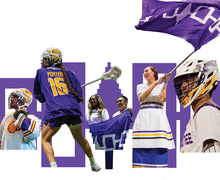How universities and their students can combat the rise of fake news
It’s a tall task today for anyone to peel through the flood of news stories on social media. Much of the content on social media feeds is dramatically headlined, and publications continue to grapple with putting out fires of false information. But sifting through credible content is a crucial skill in the fake news era, and universities can help their students learn it.
The rise of fake news and its role — if any — in the 2016 presidential election seemed to come to a head when President Donald Trump’s top aide, Kellyanne Conway, regarded false comments made by the administration as “alternative facts.” But regardless of partisan stances, everybody needs a level of media literacy, or the knowledge of “how to consume media,” said Barbara Fought, associate professor of broadcast and digital journalism in the S.I. Newhouse School of Public Communications at Syracuse University. But with tons of data on our feeds, it takes a bit of raking through the onslaught to decipher what’s credible and what isn’t.
To combat the rise of fake news, universities should develop a standard media literacy course for all its students’ curriculums, regardless of their majors. Students need to learn to analyze and verify news content, and this coursework shouldn’t only lie in the communications school. Every student should have the ability to decipher false information in the media — not just those who are learning to produce it.
The City University of New York system and the State University of New York at Stony Brook are developing journalism classes that aim to help students “spot inaccuracies” and identify “strategies to diversify online news and eliminate echo chambers,” according to USA Today College. These echo chambers are perpetuated by publications that notoriously lean left or right.
SU can take a cue from CUNY and SUNY Stony Brook, but it can also heighten the course’s significance by requiring students of all disciplines to enroll.
Outside of the classroom, verifying information comes with a price, but it’s a price well worth paying. It’s important for media consumers to use credible publications to verify information in eyebrow-raising articles. But users not subscribed to these outlets, like The New York Times or The Washington Post, are met with a blocked paywall. There is continued pressure on these publications to provide rich, ad-free content or risk losing readers.
But if students are looking to verify or deny questionable information, it’ll cost them. This means dishing out cash. Reading 10 free New York Times articles and waiting until the next first of the month is not clever. It’s negligent. Paying $3.75 for a weekly digital subscription to the Times is barely an expense for being factually correct. Even better, the Times offers a student discount so the price goes down to $1 per week.
Finding fake news isn’t only an individual experience. It’s easy to let quick remarks slide under the table with friends, but allowing false information to permeate even in brief encounters only makes reaching the truth harder for everyone.
“You have to ask, ‘how do you know that?’” said Fought, the broadcast and digital journalism professor.
We must question the sources we get information from, and hold our friends, family and co-workers accountable. Comments left unchecked can lead to more gossip mongering than news spreading.
It’s difficult when we want to wag our fingers at false information, but correcting others around us does not need to be naysaying. In the fake news era, we must generate our own points of view — not recycled ideas on Twitter or click bait. It’s not enough to know “what” happens, but how “what’ happens” operates in a larger context. Putting out fires means knowing which facts are able to do that.
It’ll cost a bit of money at the start, but think of the alternative: We’ll get what we paid for.
Brendan Germain is a senior television, radio and film major and French minor. His column appears weekly. He can be reached at bngermai@syr.edu.
Published on February 1, 2017 at 11:12 pm





